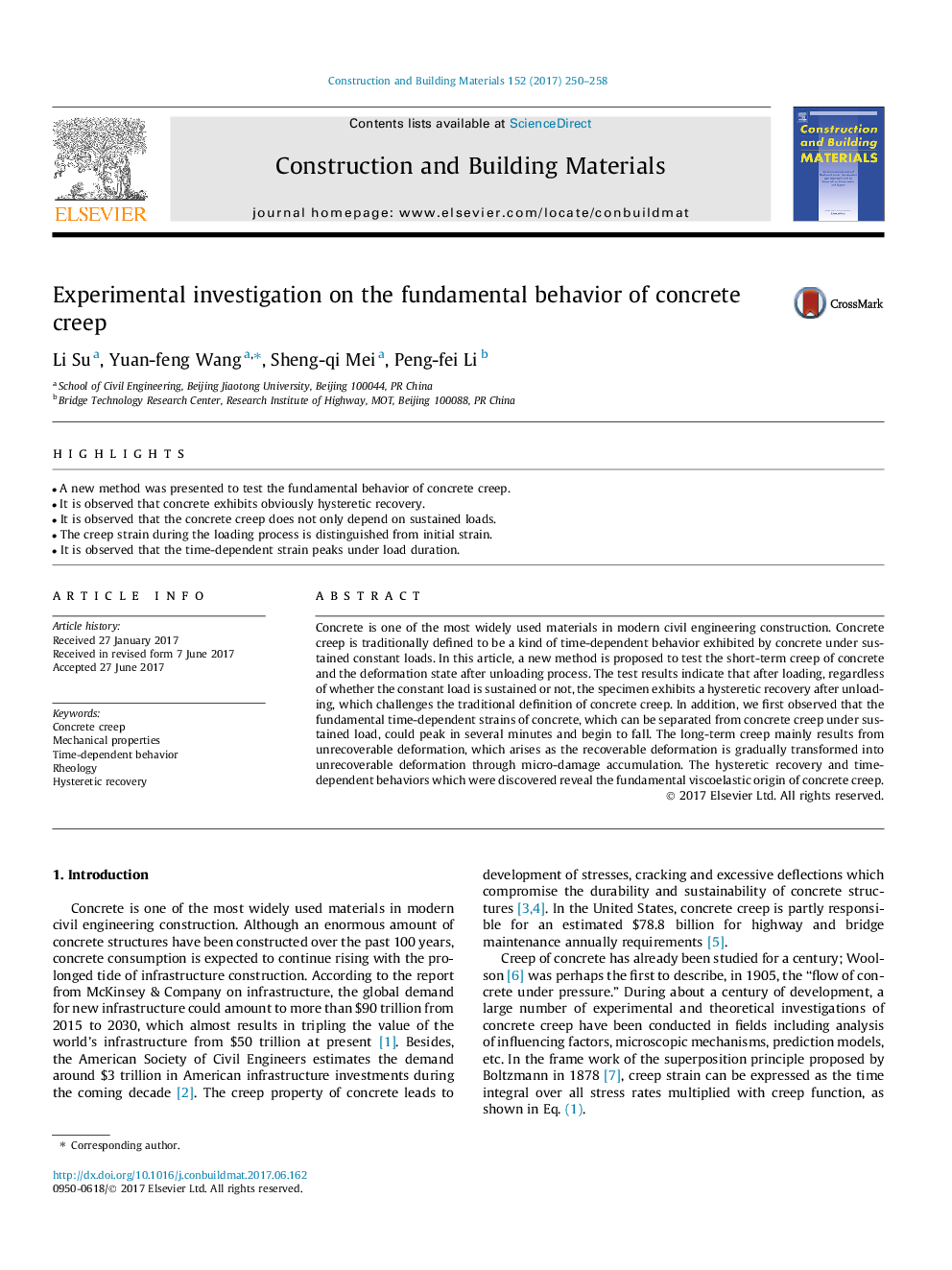| Article ID | Journal | Published Year | Pages | File Type |
|---|---|---|---|---|
| 4912765 | Construction and Building Materials | 2017 | 9 Pages |
Abstract
Concrete is one of the most widely used materials in modern civil engineering construction. Concrete creep is traditionally defined to be a kind of time-dependent behavior exhibited by concrete under sustained constant loads. In this article, a new method is proposed to test the short-term creep of concrete and the deformation state after unloading process. The test results indicate that after loading, regardless of whether the constant load is sustained or not, the specimen exhibits a hysteretic recovery after unloading, which challenges the traditional definition of concrete creep. In addition, we first observed that the fundamental time-dependent strains of concrete, which can be separated from concrete creep under sustained load, could peak in several minutes and begin to fall. The long-term creep mainly results from unrecoverable deformation, which arises as the recoverable deformation is gradually transformed into unrecoverable deformation through micro-damage accumulation. The hysteretic recovery and time-dependent behaviors which were discovered reveal the fundamental viscoelastic origin of concrete creep.
Related Topics
Physical Sciences and Engineering
Engineering
Civil and Structural Engineering
Authors
Li Su, Yuan-feng Wang, Sheng-qi Mei, Peng-fei Li,
